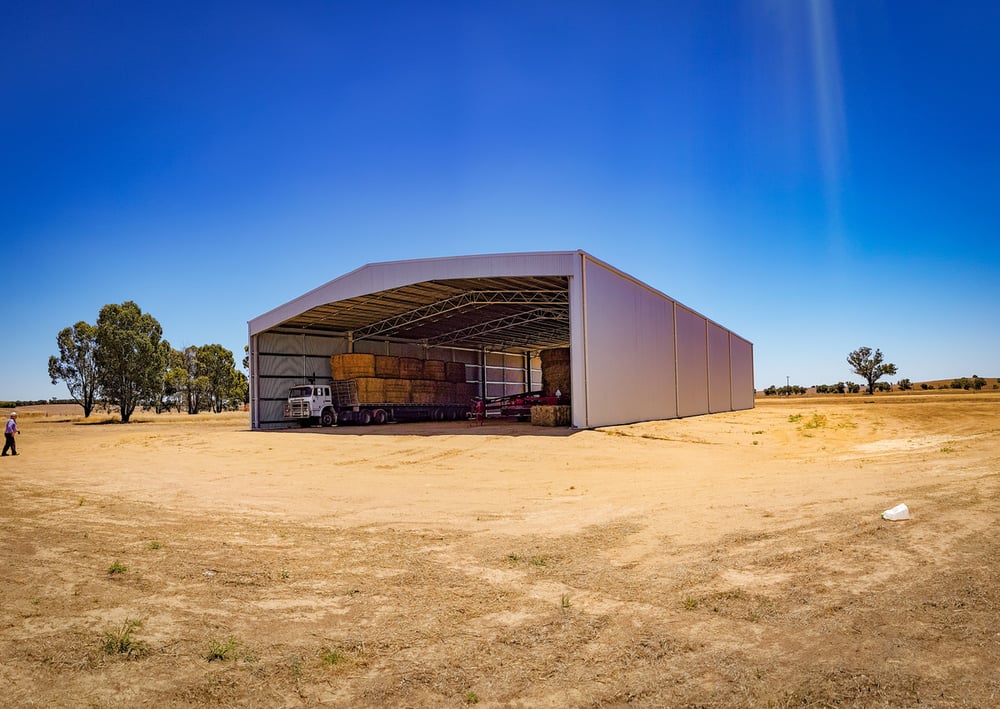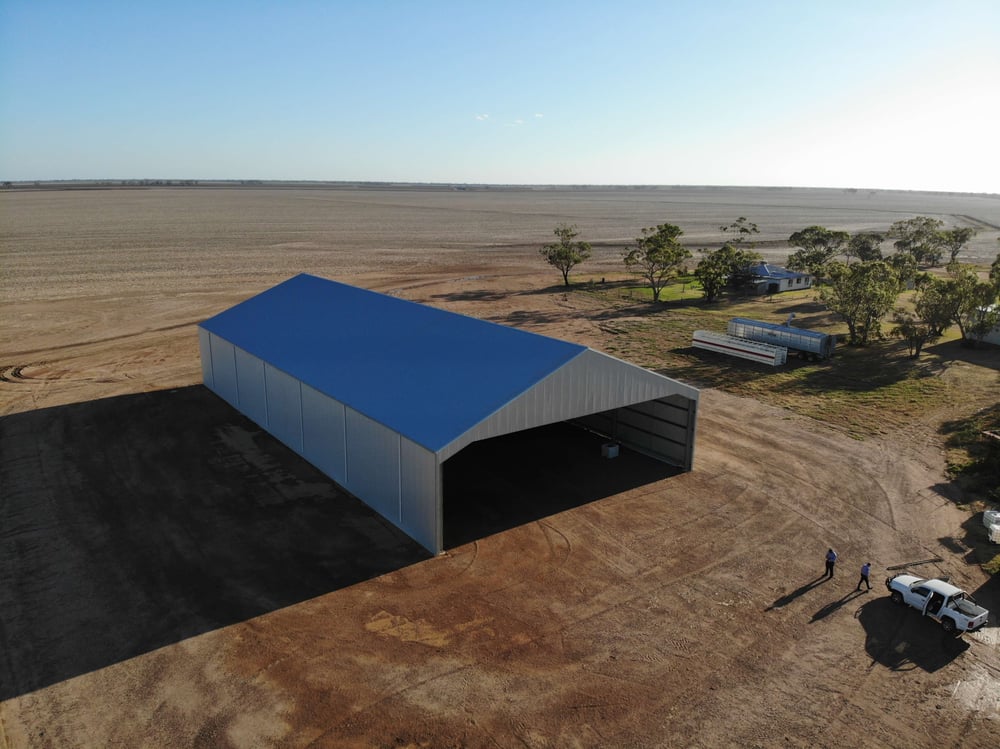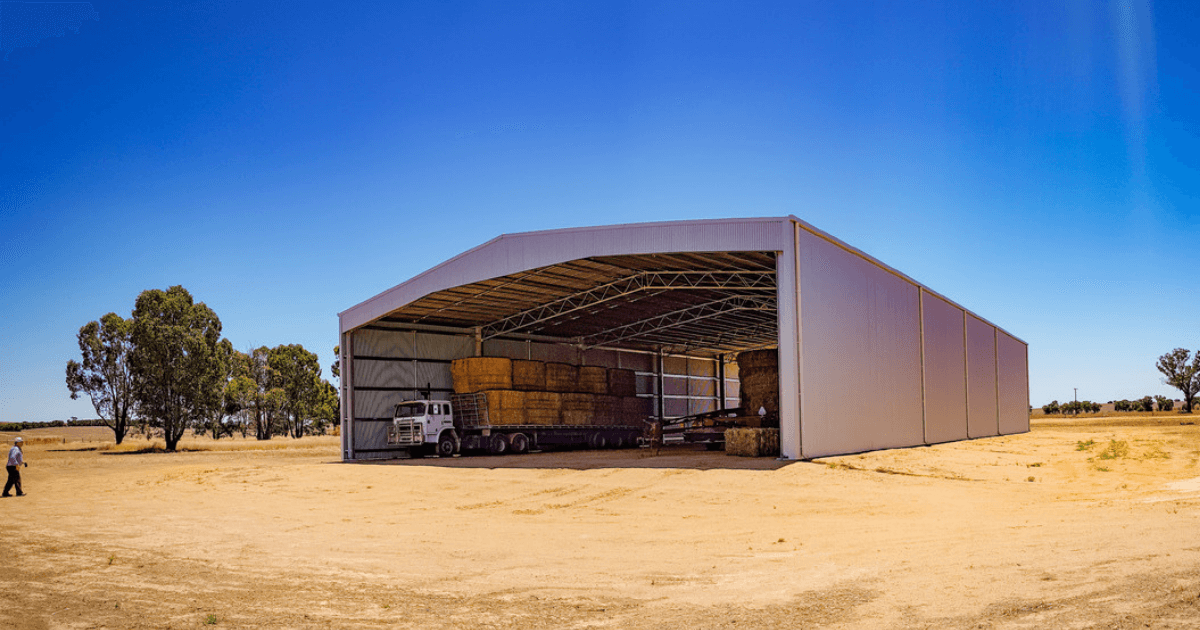Shed orientation – what you need to know

While you may have an idea of what your future farm shed or industrial building will look like, have you considered the orientation of the shed? Shed orientation is something that can be easily overlooked and in fact, is often a missed opportunity to make the most of your surroundings and seasonal weather conditions. If considered at the design stage, the orientation of your shed has the potential to provide many benefits!
In this article we’ll take a look at shed orientation basics including what directions you should position your shed in, to make the most of natural light and heating sources.
Building orientation explained
As detailed by YourHome, orientation is the positioning of a building in relation to seasonal variations in the sun’s path, as well as prevailing wind patterns. Good orientation has the potential to increase the energy efficiency of a building, making it more comfortable to reside and work in, while being cheaper to run.
A shed that’s built to make the most of the site that it’s on and the surroundings will follow a good orientation. You will want to consider a site for your shed or building with an orientation suited to the climatic and regional conditions of your location and to maximise the site’s potential for passive heating or cooling.
Passive heating and cooling involves utilising the sun as a source of free heating by letting winter sun in and keeping unwanted summer sun out — this is desirable throughout most areas in Australia due to increasingly long, and very hot summers. Passive heating can be achieved on northern elevations or by using horizontal shading devices to block high-angle summer sun and let in low angle winter sun.
Which way should you position a shed?
While the orientation of your shed will ultimately come down to your location, there are some simple shed orientation guidelines that can help make the decision easier. In New South Wales the weather can be especially varied, depending on your proximity to the coast. Inland areas can get quite cold while humidity is a key feature the closer you get to the coast. You may need to factor in your local temperature variations when considering your shed orientation if your internal shed temperatures are important.
Northerly orientation
Positioning a shed so that the opening faces north will prove beneficial if you want to make the most of natural sunlight. Sheds that face north will have a lot of direct sunlight, due to the path that the sun follows during the day. This can also help to ensure that any areas in front of the shed remain the driest.
A lot of direct sunlight can negatively impact electrical items though so if you will be storing farm machinery in your shed, this will need to be factored in. Another thing to consider with sheds that face north is the impact that severe weather and storms could bring. Storms can come from the north, meaning your shed (and its contents) could be in the path of strong wind and rain.
Southerly orientation
Positioning a shed so that it faces south will mean that your shed gets very little sunlight. This could be beneficial if you store mostly machinery items inside, as they won’t be affected by sun damage. Any building that gets little sun though is prone to dampness and cold and could produce a lot of bog around the shed during winter if there is a lot of wet weather. It’s also important to note that wind often comes from the south, so if your shed isn’t enclosed, it will be harder to keep clean and tidy.
Westerly orientation
Generally in Australia, all weather comes from the west. Having a shed that is positioned open to the west will provide your shed and its contents with little protection from harsh weather conditions. If you do choose this orientation, it’s likely that your shed would need to be fully enclosed to prevent potential damages to produce like grain and hay. Having four fully enclosed shed walls will likely end up costing more.
Easterly orientation
The most common shed orientation suited to the majority of locations here in Australia is East. Little weather comes from the east which leaves an open shed and its contents more protected from the elements.
A shed that is east-facing is also positioned to make the best use of passive heating and cooling as the shed will get morning sun on the front of the shed, but for the rest of the day, your goods and any machinery will be protected from harsh direct sunlight.

A shed that's well orientated will make the most of its surroundings and will utilise passive heating and cooling.
Other factors that influence shed orientation
There are some other factors that may influence the orientation of your shed, and some of your design choices (like the colour).
Solar power
If you’re wanting to utilise solar panels on the roof of your shed to harness solar energy, then it’s important that your shed is positioned so that your roof (and the panels) get a lot of sunlight. It’s recommended that your solar panels be placed on either the north or the west of the shed’s roof, to harness the most solar energy.
Location of the shed
Another factor that could influence the orientation of your shed, is where the shed will be located on your property. Will it be surrounded by trees and bushland? If so, how will this affect your shed's ability to capture natural sunlight? Will some of the tress need to be removed? Or, could your shed be located on the top of a hill? If so, how will potential gusts of wind affect your shed? Have you considered whether your shed will need to be fully enclosed to protect it's contents?
Making sure that your shed is in the right location is essential as this could have a big impact on the orientation of the shed. If the shed is built in a location that's prone to harsh weather conditions or could impact your ability to take advantage of passive heating and cooling, then you may want to reconsider where you locate it on your property. Are there any locations that could be more suitable?
Colour choices
Sheds can now be customised right down to the colours so this is another important consideration, particularly if your shed will get a lot of sun. During the height of summer here in Australia, the temperature of a light coloured roof will be a lot cooler than a dark roof. Darker roofs will collect the heat and this temperature will naturally make its way inside the shed which could end up being unenjoyable if you’re working inside a lot.
Most steel sheds in Australia use Colorbond colours. Colorbond colours have been designed for the harsh Australian climate and there are specific colours in the Colorbond range that are recommended for roofs as they reflect the light (and therefore result in cooler temperatures).
If you’re unsure which colour choices will work best for your specific location and shed orientation, it’s always best to consult the experts. We can help you to decide which colours will be most suitable for your shed. Just get in touch with us here.
If you’re still unsure which shed orientation is best for your farm shed or industrial building then we’d love to chat with you! We can help you to plan your shed so that it’s not just in the right location and orientation, but so that it’s built to meet your specific requirements. You can contact our friendly team to talk about your shed plans here.
Already know where your new shed will be going, but need a little help with the design? Our free shed builder can be used to design your perfect shed before you buy! Try it out here.
-1.png?width=3641&height=660&name=abcshedstransparent2%20(1)-1.png)



.png?width=352&name=abc_sheds_blog_feature_solar_energy%20(1).png)
.png?width=352&name=abc_sheds_blog_building%20_a_steel_shed%20(1).png)